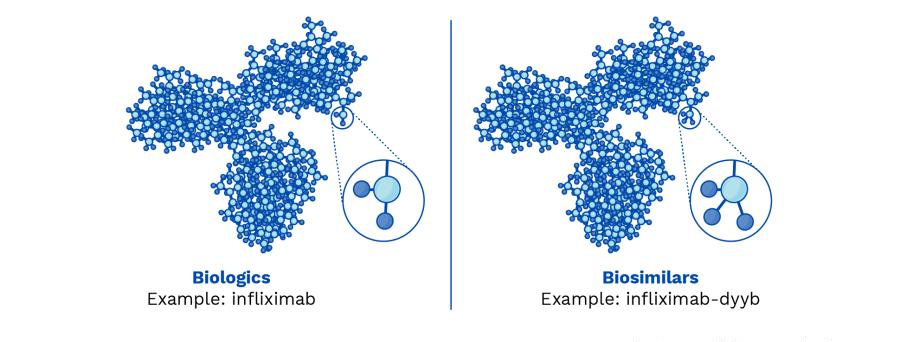As a Founder and Managing Director, Bikram plays a key role in the day to day operations and formulating strategies for smooth execution of research assignments. Bikram is also responsible for client acquisition and client engagements in Asia pacific region. Bikram helps global technology companies monetize their IP assets through automated tools and helps them generate more value out of their IP. He has the expertise of assisting clients on a wide range of technologies such as Semiconductors (circuits and processes), Wireless Technologies, Memory Devices, Cloud Computing, and Consumer Electronics.
Bikram has been advising several Global 500 clients in effective patent portfolio optimization and competitive benchmarking analysis to help them understand their position in the industry. Bikram has extensive experience in assisting clients on high stake US, Japanese and Chinese patent litigation cases. Recently, Bikram has been actively involved in advising clients on new product development strategies and technology Landscape studies.
IP Protection’s Impact on Biopharma Innovation Access
The aging population worldwide is straining national healthcare systems and challenging researchers and healthcare companies to develop new solutions for age-related diseases. While new pharmaceuticals have improved health outcomes, their innovation comes with high costs. This creates tension between promoting innovation and controlling healthcare expenses. The debate over intellectual property (IP) protection for new drugs and medical devices is central to this issue.
IP protection is crucial for incentivizing innovation in the biopharmaceutical sector, as strong patents drive research investment. However, it also leads to higher drug prices. Balancing innovation incentives with healthcare affordability is a complex challenge. Developing countries often offer weaker IP protection, leading to global conflicts over IP regimes. The debate on the ideal level of IP protection varies across countries and healthcare systems
Role of IPR in the Biopharmaceutical and Medical Device Sectors
Within the Intellectual Property Rights (IPR) space, experts explore the influence of IP protection, notably through patent mechanisms, on innovation within the biopharmaceutical and medical device domains. Here are key insights pertaining to IPR as discussed across studies:
-
Importance of Patent Protection:
Emphasis is given on strong patent protection that is essential to encourage innovation in the biopharmaceutical sector. Patents provide innovators with exclusive rights to their inventions, creating financial incentives for companies to invest in research and development.
-
Higher Prices and IP Protection:
It is noted that patent protection leads to higher prices for drugs and medical devices because it allows companies to recoup their R&D investments. This aspect highlights the trade-off between innovation incentives and the affordability of healthcare.
-
Global Variation in IP Regimes:
Different countries have varying levels of IP protection, which can lead to conflicts and disagreements in global trade negotiations. Some developing countries have weaker IP protection to promote their generic pharmaceutical industry and lower drug prices.
-
IPR in Biologics:
Research studies discuss the significance of IP protection in the context of biologics, which are large-molecule, protein-based drugs. Due to the high development costs of biologics, strong IP protection is crucial for encouraging innovation in this field.
-
Free-Rider Problem:
The concept of the “free-rider problem” is introduced, highlighting that countries may limit their spending on patented drugs to benefit from the spending of others. This behaviour can weaken IP regimes and affect global innovation.
-
Impact of Emerging Markets:
The growth of emerging market economies like China and India is expected to increase demand for biopharmaceuticals, potentially influencing global returns on R&D investments. However, the incentives for developed economies to contribute to global innovation diminish as emerging markets grow.
-
Challenges and Policy Recommendations:
Experts acknowledge challenges such as political pressure to control drug prices and regulatory reforms. It suggests that pharmaceutical companies should advocate for policies that streamline drug development processes and encourage innovation.
-
Technology and Data Analytics:
Emerging technologies and data analytics can play a significant role in improving drug development processes and reducing costs.
-
Public Awareness:
Emphasis is given to the need to acknowledge the costs and risks associated with innovation in the context of public discourse. It suggests that political rhetoric should not obscure the importance of rewarding companies for their innovation efforts.
How Intellectual Property Rights, particularly patents, impact innovation, affordability, and global trade in the biopharmaceutical and medical device sectors is different across geographies. It highlights the complex balance between incentivizing innovation and ensuring access to healthcare solutions.
Navigating the IP Landscape: Challenges and Opportunities in the Era of Biosimilars
The Affordable Care Act has drawn attention to intellectual property considerations in the US life sciences industry through the Biologics Price Competition and Innovation Act (BPCIA). This act introduced regulatory pathways for biosimilars, which are copies of branded biologic products. While biosimilars are already available in Europe, the US FDA had only accepted two biosimilars for review under the BPCIA as of August 2014.
Intellectual property rights, particularly patents, play a pivotal role in the biopharmaceutical industry. Patents grant inventors exclusive rights to their discoveries, providing a powerful incentive for biopharmaceutical companies to invest substantial resources in research and development (R&D). These exclusive rights are granted for a limited time, typically 20 years, during which the patent holder has a monopoly on their invention.
This monopoly enables biopharmaceutical companies to recoup their substantial R&D investments by selling their products at premium prices. These prices often reflect not only the cost of manufacturing but also the expense of bringing a new drug or medical device through the rigorous testing and regulatory approval processes.
The emergence of biosimilars is expected to lead to increased competition among manufacturers of biologics, which may result in heightened litigation and intellectual property (IP) challenges. The differences between biosimilars and conventional generic small molecules pose unique challenges for IP disputes:
-
Indication Extrapolation:
Biosimilars may have multiple indications, and the question arises whether all these indications will be shared with a biosimilar or if managed care organizations will encourage substitution for all indications of the referenced innovator product. This raises issues regarding indication extrapolation and method-of-use patents.
-
At-Risk Launches:
In the world of biosimilars, indication extrapolation is a crucial concept. It refers to the practice of extending the approved indications of a biosimilar to match those of the reference innovator product. This practice can impact IP protection, as innovator companies often hold method-of-use patents that are indication-specific. The “at-risk” launch dilemma is another issue that biosimilar manufacturers may face. Unlike small-molecule generic drugs, biologics lack an equivalent to the “Orange Book,” which lists approved drugs and their patents. As a result, biosimilar manufacturers launching their products before the conclusion of patent litigation may encounter challenges in identifying relevant IP.
-
Patent Thickets and Competition Challenges:
Biologics are complex molecules that can be protected by numerous patents covering various aspects, including the compound itself, methods of use, and manufacturing processes. This web of patents is often referred to as a “patent thicket”. While a broad IP portfolio can provide strong protection for innovator companies, it can also raise concerns about stifling competition and follow-on innovation. Having multiple patents on a single biologic can make it challenging for biosimilar manufacturers to navigate the patent landscape and secure market entry.
-
Allocation of Damages:
Determining the appropriate level of damages in IP infringement cases involving biopharmaceuticals can be particularly challenging. With a broad IP portfolio covering multiple aspects of a biologic, it becomes difficult to identify the precise portion of damages attributable to the infringement of specific patents. Also, the scarcity of comparable market transactions involving biologics and similar technologies complicates the assessment of damages. Unlike small-molecule generics, where market data may be more readily available, biologics present unique valuation challenges.
-
Market Research Challenges:
Biosimilars may require more complex market research to disentangle sources of demand and apportion value accurately. The complexity of biologic agents could pose challenges to market research accuracy.
-
Impact on Sales and Pricing:
Unlike small-molecule generics, biosimilars may not offer significant price discounts, and they may not be designated as ‘interchangeable’ by regulatory authorities. This can lead to lower penetration rates and price erosion.
The emergence of biosimilars presents new IP challenges and opportunities for innovator companies in the life sciences industry. Understanding the differences between biosimilars and small-molecule generics is essential for developing effective responses to these challenges and opportunities.
-
The Innovation-Incentive Paradox:
On the surface, strong IP protection appears to be a boon for innovation in the biopharmaceutical sector. It provides companies with the assurance that their investments will yield returns and fuels a competitive drive to develop novel therapies and devices. This drive has yielded remarkable breakthroughs, from life-saving cancer treatments to revolutionary medical devices.
However, this innovation comes at a price, quite literally. The monopoly granted by patents allows companies to set high prices for their products, making them less affordable to the average person. This creates a tension between incentivizing innovation and ensuring that these groundbreaking therapies are accessible to those who need them.
-
The Affordability Challenge:
One of the most significant challenges posed by intellectual property protection in the biopharmaceutical sector is the affordability of innovations. High drug prices, often influenced by the need to recoup R&D costs and secure profits, can put life-saving treatments out of reach for many patients.
The affordability challenge is particularly acute in cases where patients rely on these innovations for life-threatening conditions. Cancer therapies, for instance, can carry exorbitant price tags, leading to financial hardship for patients and their families.
-
Global Variation in IP Regimes:
Another layer of complexity in the IP landscape is the global variation in IP protection. Different countries have distinct IP regimes, with varying levels of protection and enforcement. This global disparity has led to conflicts and disagreements in international trade negotiations. Some developing countries have opted for weaker IP protection to promote their generic pharmaceutical industry and reduce drug prices. This approach has often been a point of contention in trade discussions, as it can affect the profitability of biopharmaceutical companies and their willingness to invest in R&D.
Conclusion
The advent of biosimilars in pharmaceuticals introduces challenges and opportunities in intellectual property. Unlike traditional generics, biosimilars require careful consideration from innovators and regulators. Robust patent protection incentivizes biopharmaceutical innovation but raises concerns about drug affordability. Companies navigate complexities with strategies like early IP planning, Patent Life Extension, and portfolio management. Researchwire is a crucial ally, offering support for comparative analysis, legal case insights, and strategic recommendations in managing biologic patent portfolios. A key resource for researchers and patent professionals, Researchwire assists businesses in addressing the evolving biosimilars landscape with effective portfolio management.
It simplifies the research process, provides insights, and helps users make informed decisions to protect their intellectual property effectively. Additionally, services related to identifying licensing opportunities, developing an IPR strategy and legal compliance on innovations are also managed by Researchwire.
About Us
The recent Life Science Strategy Summit on IP & Exclusivity in Munich, spanning three days, concluded with fruitful discussions on practical patent strategies. As a key participant, Researchwire actively engaged in industry-led conversations on patent prosecution and market exclusivity. Having leveraged the benefits of this premier event, Researchwire remains committed to applying the insights gained, reinforcing its role in driving innovation within the life sciences sector.
An ISO 27001 certified, Researchwire is a specialised IP research and R&D support company. Works closely with IP & legal teams to provide patent portfolio services and all types of patent searches & patent drafting. It provides enterprises and R&D centres with insightful and effective solutions to address their technology development challenges and roadmap planning.




